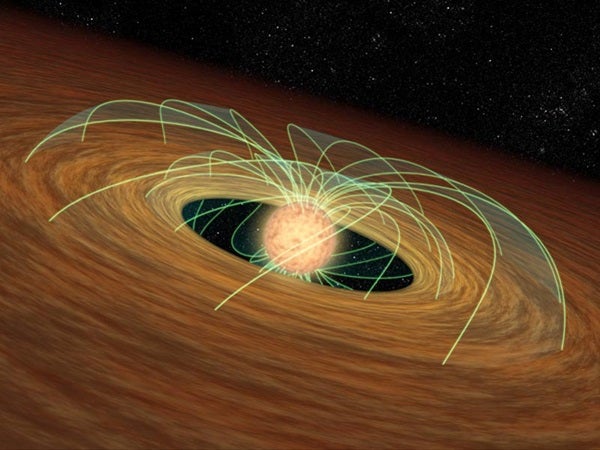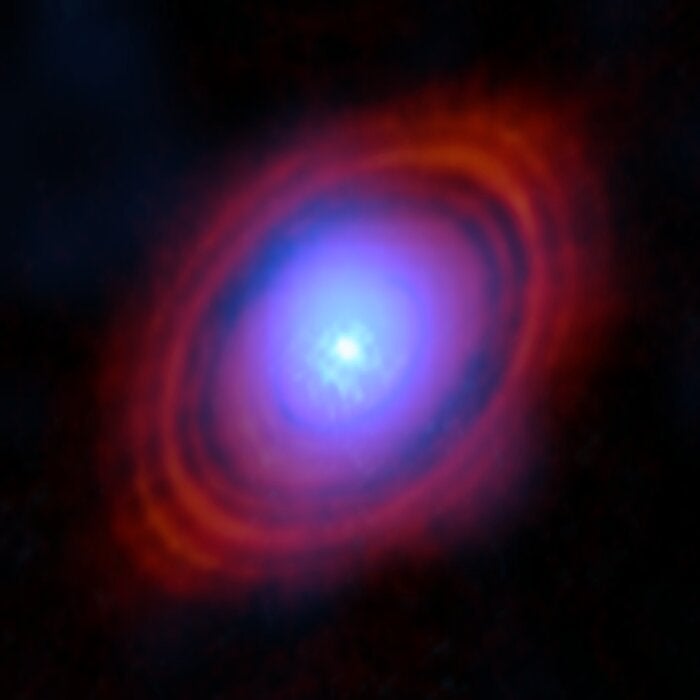A few stars are known to be associated with a sudden and violent “feeding,” characterized by a fast and dramatic increase of visible light by a factor of at least a hundred. These phenomena are called “FU Orionis outbursts,” as they were first discovered toward the star FU Orionis. Not so many stars have been found to be associated with such outbursts — only a dozen out of thousands. However, astronomers speculate that all baby stars may experience such outbursts as part of their growth.
The observed steady and continuous accretion can actually only explain a small faction (1-10 percent) of the final mass of a newborn star. Therefore, astronomers have been intrigued by how the other 90-99 percent of the mass of the star is formed and what the growing process of a star looks like. Over a decade, there have been several theories put forward. Out of these theories, Liu and Takami considered one related to gas clouds, gravity and interaction to be a more reasonable explanation.
They used HiCIAO, camera at the Subaru 8.2-meter telescope located at the summit of Maunakea, Hawaii, to observe four stars with FU Ori outbursts, located 1,500 to 3,500 light-years from our solar system. The high-resolution near-infrared images of these stars were surprising and fascinating, and were nothing like anything previously observed around young stars. Three of the stars were observed to have unusual tails. One shows an arm, a feature that is the result of the motion of material around the star. Another shows odd spiky features, which may result from an optical outburst blowing away circumstellar gas and dust.
To better understand the observed structures, theorists in the team extensively studied one of the mechanisms proposed for the FU Ori outbursts. According to this theory, gravity in circumstellar gas (plus dust) results in complicated structures that look like cream stirred into coffee. These structures fall onto the star at irregular intervals. The team conducted further computer simulations for scattered light. Although more simulations are required to match the simulations to the observed images, the images obtained so far suggest that this is a promising explanation for the nature of FU Ori outbursts.
Studying these structures may also shed light on how some planetary systems are born. Astronomers know some exoplanets (planets around other stars) are found extremely far away from the central star, sometimes at more than a thousand times the distance between the Sun and Earth. This is significantly larger than the orbit of Neptune (about 30 times the distance between the Sun and Earth) and orbits explained by standard theories of planet formation. Simulations of complicated circumstellar structures like the ones seen here also predict that some dense clumps of material may become gas giant planets. This would naturally explain the presence of exoplanets with the large orbits described above.









